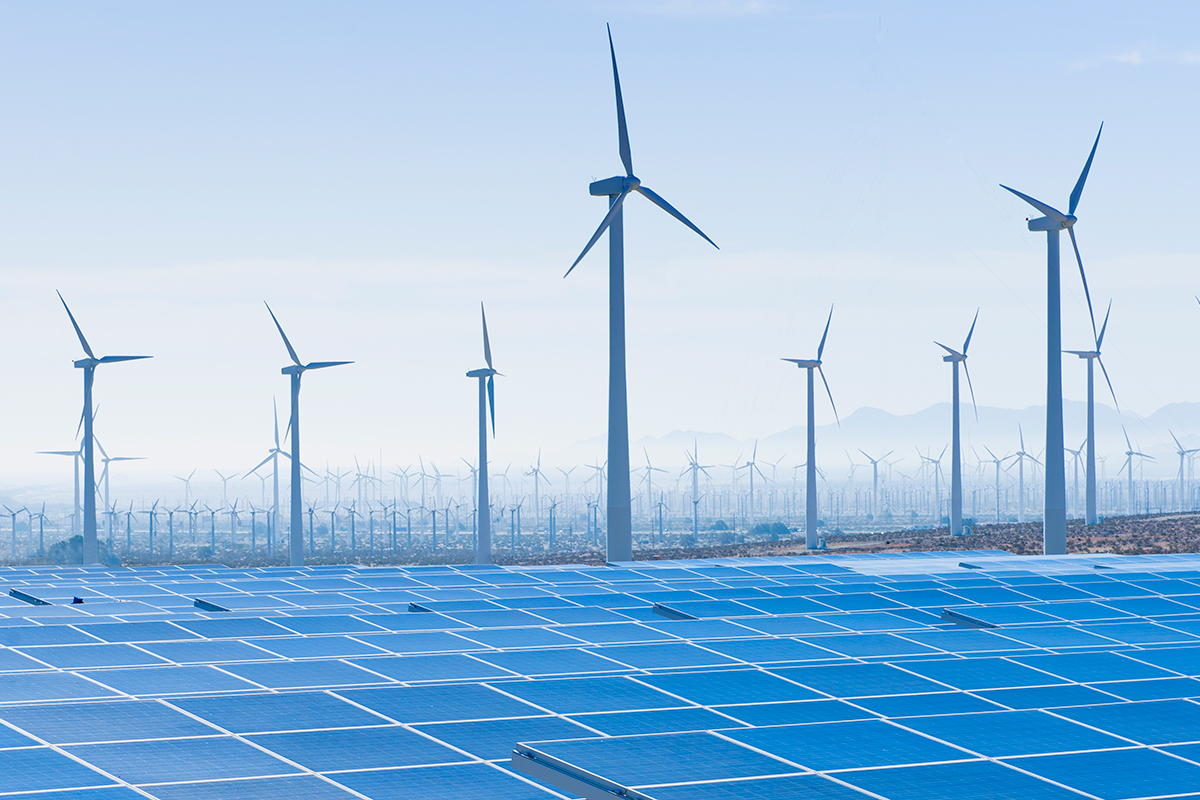Introduction
Investing in renewable energy has gained significant attention in recent years due to its potential for both financial returns and environmental benefits. As the world grapples with the challenges of climate change and the depletion of fossil fuels, renewable energy sources like solar, wind, and hydropower offer promising investment opportunities. In this comprehensive guide, we will explore how to invest in renewable energy, emphasizing the steps, strategies, and considerations involved.

Investing in Renewable Energies:
A Guide for Each: Educate Yourself on Renewable Energy Options: The first step to investing in renewable energy is to gain a deep understanding of the various options available. Sunlight based, wind, hydropower, biomass, geothermal, and different types of sustainable power are models. Each has its own set of advantages, risks, and market dynamics. To make informed decisions, you must familiarize yourself with these options.
Assess Your Investment Goals and Risk Tolerance:
Determine your investment objectives and risk tolerance before proceeding. Are you looking for long-term stability, steady income, or aggressive growth? Renewable energy investments can vary significantly in terms of risk and return, so align your goals with your risk tolerance.
Choose Your Investment Vehicles:
There are several ways to invest in renewable energy, including stocks of renewable energy companies, exchange-traded funds (ETFs), mutual funds, and direct investments in renewable energy projects. Research each option to determine which aligns best with your goals and preferences.
Research Renewable Energy Companies:
Identify publicly traded renewable energy companies with strong growth prospects. Conduct thorough research on their financial health, market position, and future growth potential. Look for companies that have a track record of innovation and sustainable practices.
Explore Renewable Energy Funds:
ETFs and mutual funds focused on renewable energy provide diversified exposure to the sector. They often include a mix of companies engaged in various aspects of renewable energy production, such as solar panel manufacturers, wind turbine producers, and utility companies.
Direct Investments in Renewable Projects:
For a more hands-on approach, consider direct investments in renewable energy projects. This may involve investing in solar or wind farms, hydroelectric facilities, or geothermal power plants. These projects can offer steady income streams through power purchase agreements (PPAs).
Review Financial Metrics:
Pay close attention to financial metrics when evaluating potential investments. Analyze factors like revenue growth, earnings, debt levels, and cash flow. Assess how these metrics compare to industry benchmarks and historical performance.
Understand Government Incentives:
Many governments offer incentives and subsidies to promote renewable energy adoption. Familiarize yourself with these programs, as they can impact the financial viability of your investments. Examples include tax credits, feed-in tariffs, and grants.
Monitor Market Trends:
Stay updated on industry trends, technological advancements, and regulatory changes. The renewable energy sector is dynamic and can be influenced by policy decisions and market forces. Being well-informed can help you adapt your investment strategy accordingly.
Diversify Your Portfolio:
As with any investment strategy, diversification is key to managing risk. Spread your investments across different renewable energy sectors and companies to reduce exposure to individual risks.

FAQs about Investing in Renewable Energy
Q1: Is investing in renewable energy a sustainable and environmentally responsible choice?
A1: Yes, investing in renewable energy supports a more sustainable and environmentally friendly future by reducing carbon emissions and dependence on fossil fuels.
Q2: Are renewable energy investments profitable?
A2: Renewable energy investments can be profitable, but returns vary depending on factors such as the type of investment, market conditions, and government policies.
Q3: What are some common risks associated with renewable energy investments?
A3: Common risks include regulatory changes, technological advancements, competition, and fluctuations in energy prices.
Q4: Are there tax incentives for renewable energy investments?
A4: Many countries offer tax incentives and subsidies to promote renewable energy investments, such as Investment Tax Credits (ITCs) and Production Tax Credits (PTCs) in the United States.
Conclusion
Investing in renewable energy is not only financially viable but also contributes to a sustainable and greener future. This comprehensive guide has outlined the essentials how to investing in renewable energy, emphasizing the importance of education, goal setting, and diversified strategies. By understanding the available investment options, assessing risk tolerance, and staying informed about market trends, you can make informed decisions that align with your financial goals and contribute to a cleaner planet. In a world increasingly focused on sustainability, renewable energy investments are a promising avenue for both economic and environmental benefits.
Know more
Navigating the Future: Global Climate Change Solutions for a Sustainable Planet

